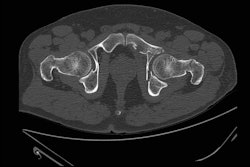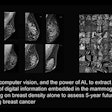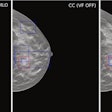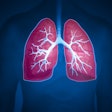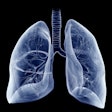Most productivity gains from AI will go to employers, vendors, and private-equity firms rather than employed radiologists, according to a new opinion piece.
“Without structural change in how value is shared, increased productivity will come at the expense of those who still work,” Heathcote Ruthven, a content and sales strategist with Agten Radiology, U.K., and musculoskeletal radiologist Dr. Christoph Agten, wrote in an article finalized by the European Journal of Radiology Artificial Intelligence on 18 July.
Radiologists cannot control the pace of AI, but they can prepare a clear “Plan B,” they noted. “Some may seek equity in a practice, move into education or industry, or shift toward procedures and subspecialties that automation is less likely to affect. Younger radiologists should think not only about how to adapt, but how to build additional income streams. Those later in their careers may focus on securing roles that are harder to replace or on reducing clinical time on their own terms.”
History shows automation boosts efficiency while reducing labor’s share of income -- labor is scarce today, but if AI tools can increase productivity by orders of magnitude, practices will employ fewer radiologists, Ruthven and Agten argued. High radiologist salaries increase the pressure to automate, and once adopted, automation tends to reduce labor’s share of the value it creates.
 Economist and technologist James Bessen stated that automation tends to shift value from labor to capital. His inverted U-curve charts the boom-and-bust cycle for labor: on the way up, lower costs open markets and create jobs; on the way down, machines replace labor, and the job market shrinks. Applying the Bessen U-curve to radiology shows how productivity gains can raise jobs before cutting them. Figure courtesy of Heathcote Ruthven and Dr. Christoph Agten and European Journal of Radiology Artificial Intelligence.
Economist and technologist James Bessen stated that automation tends to shift value from labor to capital. His inverted U-curve charts the boom-and-bust cycle for labor: on the way up, lower costs open markets and create jobs; on the way down, machines replace labor, and the job market shrinks. Applying the Bessen U-curve to radiology shows how productivity gains can raise jobs before cutting them. Figure courtesy of Heathcote Ruthven and Dr. Christoph Agten and European Journal of Radiology Artificial Intelligence.
“As AI capabilities grow, radiologists will shift from reading to reviewing, from interpreting to confirming. Tasks such as biopsies and patient consultations will likely remain in human hands. Radiology will continue to exist, but the nature and value of the work will change. For some, this brings opportunities. For others, a loss of autonomy, status, or income,” they wrote.
For AI firms and investors, radiology remains too good an opportunity to ignore, the duo continued. “It offers what they value most: a large market with high-quality datasets. As such, radiology is by far the top target for medical AI.”
By December 2024, 76% of all AI-enabled medical applications were cleared by the U.S. Food and Drug Administration. Meanwhile, ageing populations, rising chronic disease, and cheaper imaging have driven up imaging volumes, and there are too few radiologists to meet demand.
“Once AI matches radiologists' reporting accuracy, practices can reduce their largest expense: salaries,” they pointed out. “Once AI surpasses human accuracy, fewer radiologists will be employed. These staffing decisions are increasingly not made by radiologists, but department heads, practice owners, and private equity firms.”
In U.S. practices, for example, radiologist ownership fell from 63% to 46% between 2012 and 2024, while private equity ownership rose from 1% to 13%.
Radiologists should be aware of these trends and, where appropriate, adopt strategies to navigate AI disruption, such as gaining equity in their practice, specializing in areas resistant to automation, or transitioning to alternative career paths, they concluded. “As AI redefines roles, radiologists should seek equity, specialise, or pivot.”
You can read the full article here.







